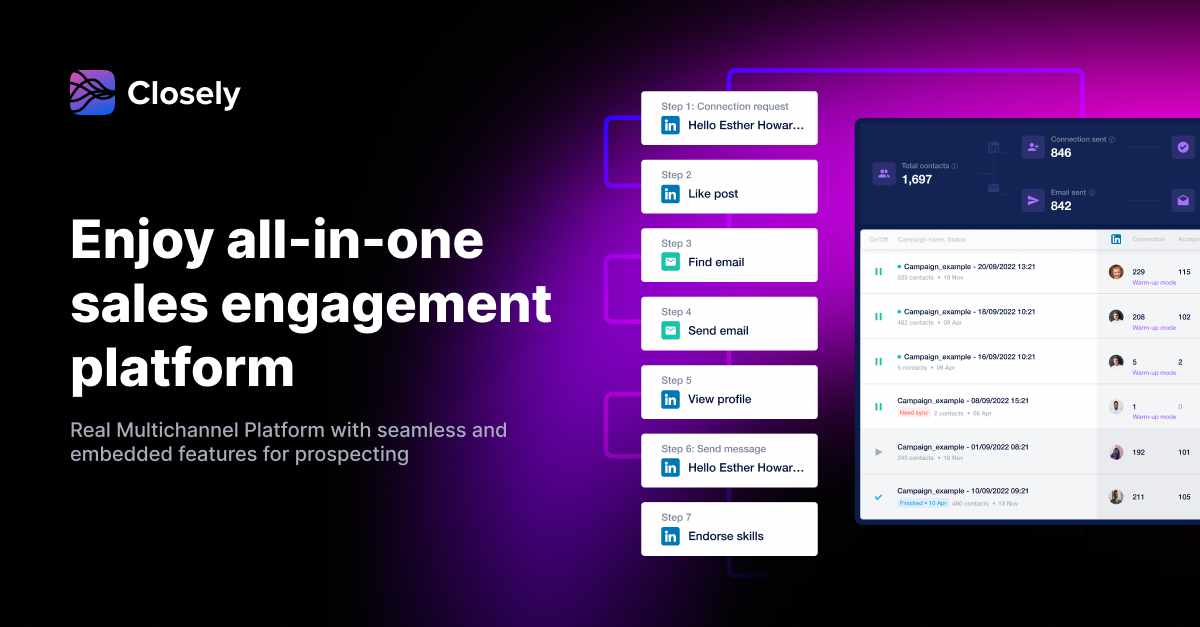For any sales professional, closing deals is critical to survival and growth. A well-structured sales pipeline is the backbone of your success. However, as part of our career evolution, we sometimes hit a wall, proclaiming, “I Can’t Find any Customers!!” However, this refrain should never be the case.
This article aims to guide sales and business development professionals in any industry through the steps to build and optimize a sales pipeline. The team at ClearSky 2100 Ventures provides actionable insights and strategies to enhance the efficiency and effectiveness of the sales process. Each step drives sales success, from identifying your target market to regular analysis and optimization. By understanding and implementing these steps, sales specialists from any industry can make informed decisions and return to growth. Join us as we delve into best practices for sales pipeline optimization.
Step 1: Identify Your Target Market
The first step in building a successful sales pipeline is identifying your target market.
This involves building buyer personas, fictional representations of a key audience segment you’ve identified as having a particular interest in your product or business. They represent your ideal customers, their needs, and how your product or service can meet them.

A well-defined target market allows for effective lead generation and ensures that sales efforts focus on prospects most likely to convert into customers.
To identify your target market, consider the following factors:
- Demographics: Age, gender, location, income level, education, and occupation.
- Psychographics: Interests, attitudes, behaviors, and lifestyle preferences.
- Pain Points: What problems does your product or service solve for them?
- Buying Behavior: How do they make purchasing decisions?
By understanding these aspects, you can craft a compelling value proposition that resonates with your target market, setting the stage for a robust sales pipeline.
Step 2: Craft Your Value Proposition
Once you’ve identified your target market, crafting a compelling value proposition is next.
The value proposition is a clear statement that explains how your product or service solves customers’ problems, delivers specific benefits, and why it’s better than the competition. Your value proposition is inextricably tied to your company’s mission and vision

Your value proposition should be customer-focused and communicate your product or service’s unique value.
It should answer the question, “Why should a customer choose your product or service over others?”
A strong value proposition can attract potential customers, retain existing ones, and drive sales success. It forms the foundation of your sales pipeline and influences how you approach lead generation, qualification, and conversion.
Find Your Opportunity Zone
The first two factors are must-do steps to ensure the development of a strong sales pipeline. However, we suggest further refinement of the process to incorporate your Opportunity Zone.
The Opportunity Zone is a unique concept consisting of sub-segments within a broader market opportunity that align with your personal brand, value proposition, and specific product attributes. As such, it not only incorporates the buyer personas and value proposition but also includes the salesperson’s personability attributes in the pipeline development process. This process typically works best in markets with a broad customer base, e.g., hospitality, financial services, etc. It can also help you create the network effect.
Step 3: Define Your Sales Pipeline Stages
A well-defined sales pipeline consists of a lead’s distinct stages, from initial contact to closing the deal.
Each stage represents a step in your sales process and should align with the buyer’s journey.
Typically, a sales pipeline includes the following stages:
- Lead generation: Identifying potential customers.
- Lead qualification: Assessing the lead’s fit and interest.
- Proposal: Presenting your solution to the qualified lead.
- Negotiation: Discussing terms, pricing, and other details.
- Closing: Finalizing the deal and beginning the customer relationship.
To generate leads, tap into your existing network of past and current relationships. Lead generation solutions can help, but of course, they come at a cost. Defining clear stages helps you manage your sales process more effectively. It allows you to track progress, identify bottlenecks, and forecast sales.

Remember, the stages may vary based on your business model, industry, and target market. However, it’s crucial to customize them to fit your unique sales process.
Step 4: Implement a CRM System
A Customer Relationship Management (CRM) system is vital for managing your sales pipeline. It helps you track interactions with prospects and customers and provides a centralized platform for all your sales data.
With a CRM system, you can monitor the progress of leads through the pipeline stages. It provides real-time visibility into your sales process, enabling you to make informed decisions.
Moreover, a CRM system can automate routine tasks, freeing up your sales team to focus on building relationships and closing deals. It can also provide valuable insights through data analytics, helping you optimize your sales strategy.

Choosing the right CRM system depends on your business needs and budget. Various options are available, from simple, affordable solutions for small businesses to comprehensive platforms for large enterprises. Select a system that aligns with your sales process and can scale with your business growth. Let’s take a look at some CRM systems worth considering.

Hiver
Hiver is a collaborative email management solution ideal for teams that rely heavily on shared inboxes and internal communication. It streamlines email workflows, assigns tasks, and tracks conversations, making it perfect for customer support teams and agencies managing multiple client accounts. It’s integrated into Gmail and Google Workspace, eliminating potential redundancy in your company’s tech stack.
HubSpot CRM
HubSpot CRM is a free, user-friendly CRM system that integrates seamlessly with HubSpot’s marketing, sales, and service tools. It’s well-suited for startups and small businesses seeking an all-in-one solution for managing contacts, sales pipelines, and customer interactions. It is an attractively priced solution with an extensive marketplace of integrations and exceptional customer service.
Monday Sales CRM
The monday.com Sales CRM is an all-in-one platform for managing the entire sales cycle, trusted by over 225,000 customers. It offers code-free integrations and features including lead management, opportunity tracking, account management, and sales forecasting. The platform enables teams to automate repetitive tasks, customize sales pipelines, and analyze performance through customizable dashboards. It emphasizes quick setup, simple adoption, and seamless connection between sales and post-sales activities.
Freshworks CRM
Freshworks CRM is a cloud-based CRM system for businesses of all sizes. It offers a comprehensive suite of features for sales automation, lead management, and customer support and includes individual solutions such as Freshdesk, Freshchat, Freshservice, and Freshsales. Freshworks takes a customer-first approach and is a good choice for businesses seeking a scalable CRM solution incorporating strong AI features that can grow with their needs.
In summary, consider Hiver for collaborative, integrated email management with Gmail, HubSpot CRM for a free and easy-to-use CRM with best-in-class customer support, monday.com for a robust CRM systems deeply integrated with the monday.com work management solution and Freshworks CRM for a scalable solution with strong AI capabilities targeted to medium enterprises.

Step 5: Train Your Sales Team
Training your sales team is critical in building a successful sales pipeline. Your team needs to understand the sales process, the stages of the pipeline, and their responsibilities at each stage.
Sales training should also cover effective communication and negotiation skills. These are essential for moving leads through the pipeline and closing deals. Regular training sessions can help your team stay updated with the latest sales techniques and industry trends.
Moreover, training should include the use of your CRM system. Your team needs to know how to input data accurately, track interactions with leads, and use the system’s analytics for decision-making.
Remember, a well-trained sales team can manage the sales pipeline more efficiently. They can identify high-quality leads, prioritize them, and move them through the pipeline faster. Strong training leads to increased sales success and contributes to business growth.
For smaller teams or solopreneurs, many CRM systems provide not only technical training but also additional insights into the sales process.
Step 6: Analyze and Optimize Regularly
Regular analysis and optimization are the final steps in building a successful sales pipeline. Pipeline analysis involves tracking key sales metrics, identifying bottlenecks, and making necessary adjustments.
Key metrics to track include:
- Conversion rates at each stage of the pipeline
- Average deal size
- Sales cycle length
- Pipeline velocity
- Customer Churn
These metrics provide insights into the efficiency of your sales process. They can help you identify where leads are getting stuck and where you’re losing potential customers.

Once you’ve identified areas for improvement, you can implement strategies to optimize your pipeline. Optimization might involve:
- Refining your sales process.
- Providing additional training to your sales team.
- Adjusting your lead qualification criteria.
Remember, sales pipeline optimization is not a one-time task. It’s an ongoing process that requires regular review and adjustment. By continually analyzing and optimizing your pipeline, you can ensure it remains effective and contributes to your overall sales success.
Addressing Pain Points is the Goal
Finally, getting back on track as a sales or business development professional may not be as difficult as one may think. It doesn’t matter if you’re a startup or part of a large organization; understanding and building your pipeline is key. Building a successful sales pipeline is a strategic process that requires careful planning, implementation, and continuous optimization. It’s a critical component of your sales strategy, driving sales success and contributing to the overall growth of your the key to a successful sales pipeline lies in understanding your target market, crafting a compelling value proposition, defining clear pipeline stages, implementing a robust CRM system, training your sales team effectively, and regularly analyzing and optimizing your pipeline. By following these steps, you can create a sales pipeline that drives sales success and provides valuable insights for informed business decisions.
To discuss sales strategies in more detail, feel free to reach out to the team at ClearSky 2100 Ventures to discuss our Partnerships for Growth and how we can support you in your journey.
Disclosure: At ClearSky 2100, our portfolio partly consists of affiliate partnerships. We may earn a small commission from buying links on our site at no cost to you.





